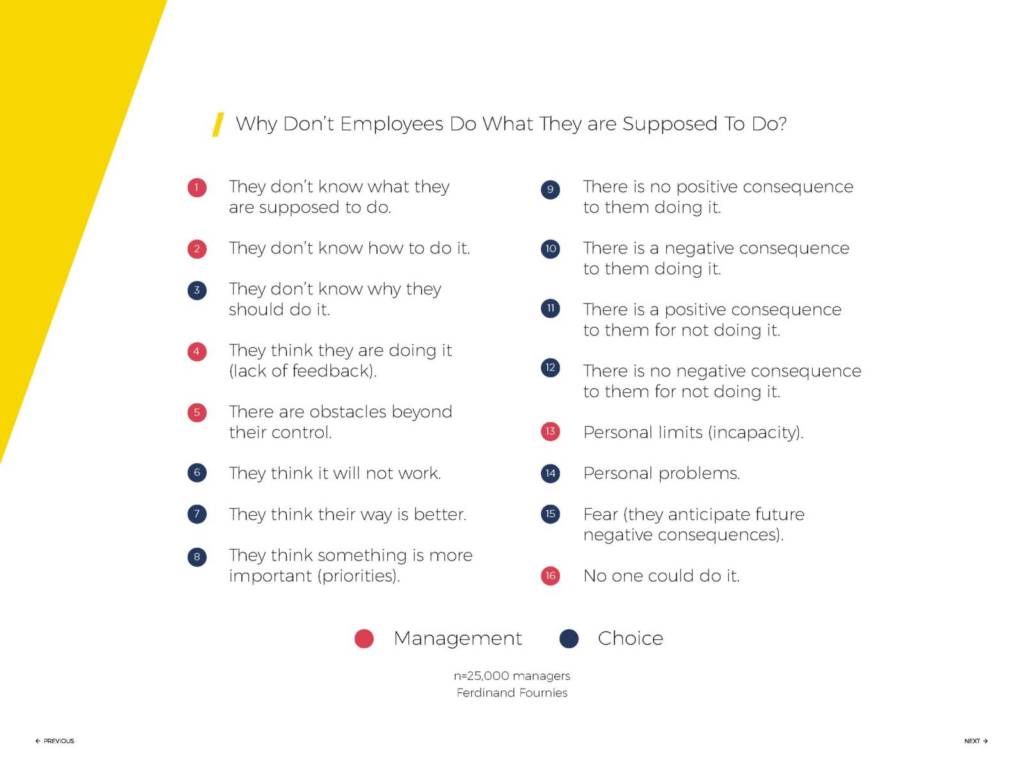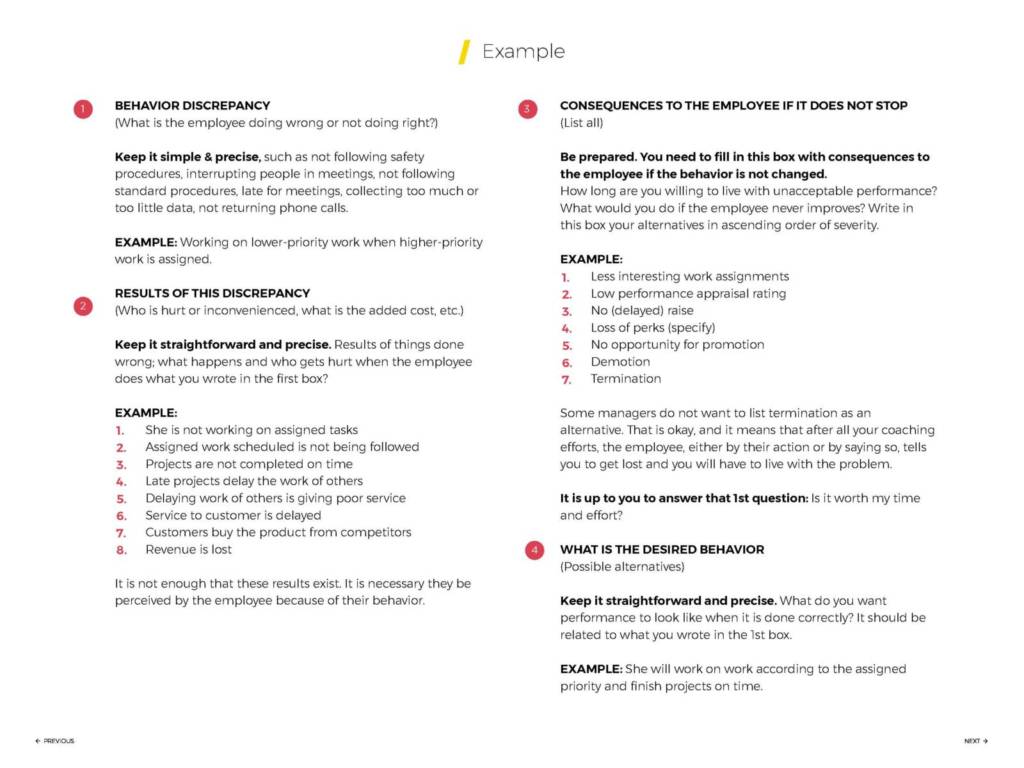What can you do when people are not doing what they are supposed to be doing or are doing something they should not be doing?
The process used is called coaching.
It is a four-step process that will guide you in using the simplest to the most sophisticated interventions as needed to improve performance problems:

Step 1. Neutral Feedback. Tell the person about the performance problem and ask them to fix it. Follow up to check for improvement; reinforce any improvement.
Step 2. Neutral Feedback. If performance has not improved, tell them about the performance problem; ask why performance is bad; ask for specific behavior change; assist if needed. Follow up to check for improvement; reinforce any improvement.
Step 3. Coaching Analysis. If performance does not improve, use coaching analysis to understand why performance is unsatisfactory and eliminate what influences poor performance.
Step 4. Coaching Discussion. If poor performance is by employee choice, use the coaching discussion to change their choices.

The first step in coaching analysis is crucial to your success as a manager and coach.
The analysis aims to help you answer the question, “what is influencing performance?” This is not a rhetorical question, but one in search of facts, in contrast to the more typical responses from managers after they observe a performance problem, such as:
- I know what’s wrong, he just needs a kick in the …
- What’s wrong is we don’t pay enough for the job; what else can you expect?
- You know these young kids nowadays, you can’t expect much more.
- You just can’t get any more out of these old-timers.
- We must get some people in here with the right kind of attitudes.
- Well, I guess it’s time for another pep talk.
- She must be having personal problems at home.
- Etc.….
Once stated, these reasons become accepted as the real reason for unsatisfactory performance, and the manager acts accordingly without further analysis. This thinking leads managers to the self-destructive behavior of aggressively applying solutions to correct non-existent problems for deficient performance.
The point is if your first response to the question “What is influencing deficient performance?” is “I know what it is, it is so obvious,” you should be worried.
To help you avoid that problem, the Coaching Analysis (see below) will lead you through a step-by-step analysis to help you identify the problem and appropriate action.
The Coaching analysis is completed by you, the manager alone if you have sufficient information to do so. Suppose you lack enough information to answer the questions in the analysis. It is necessary to collect the data either by talking with someone familiar with the situation or by talking to the employee. When you speak to the person to gather information to complete the Coaching Analysis, the purpose is not to discipline the employee or play “Gothya.”
In other words, after you observe a performance discrepancy, your first discussion with the employee may be to collect information about what happened. This is separate and distinct from any conversation you might have after you have completed the Coaching Analysis and identified the reason for nonperformance.

